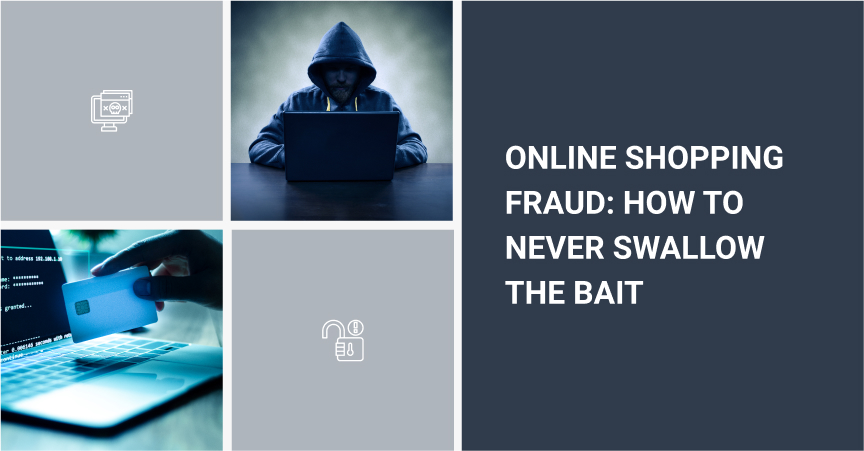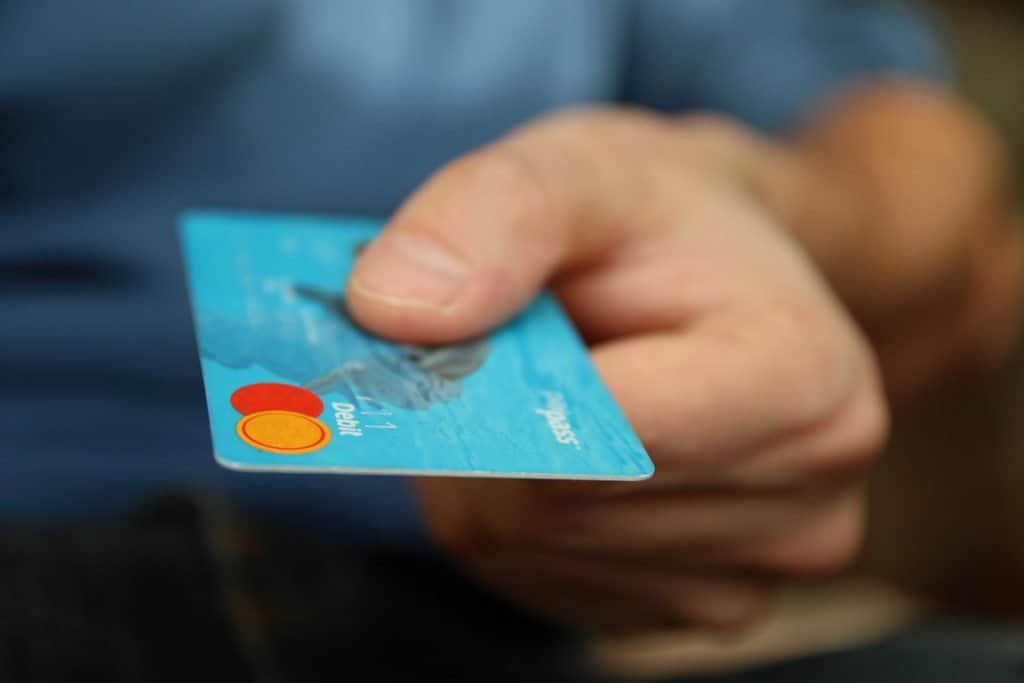Online Shopping Fraud: How To Never Swallow The Bait

Ecommerce entrepreneurs often find themselves at the forefront of different risks connected with online shopping frauds. Online businesses are constantly facing challenges because all purchases are made as CNP (“card not present”) transactions. In this article, we’ll try to learn what red flags you should pay attention to, and how you can minimize the risk of loss from internet fraud.
The number of internet fraud attempts is increasing alongside with the persistent growth of online shopping popularity. Some of the most common complaints of dropshippers include credit cards cheats, refund fraud, identity theft, and other ways of scam. The result is the same: the seller does not receive the payment or has to give it back, being left without goods and money. But forewarned is forearmed: AliDropship team has accumulated solid background in dropshipping – and in the matters of fighting internet scam as well, so you have an excellent opportunity to learn everything from our experience.
Online shopping fraud complaints: our experience
First of all, there’s no need to go paranoid – your dropshipping store is not a Las Vegas casino, and your customers mostly are not Ocean’s Eight or Eleven.
The managers of our own online stores have not witnessed any egregious cases of fraud for all the time of their performance. As a rule, dropshipping is not the sphere facing the crimes of the century. In general, the attempts of online shopping fraud are quite rare.
Still, things happen; in our stores taken all together, there is about one case of fraud per month at the average. It’s not surprising that the more popular the store is, the more fraud attempts it will face, so it can’t hurt to be cautious.
We have already told you about the sticky situation one of our customers got into. Let me remind you: our client Stuart got a customer who repeatedly made several orders that cost about £300 each and brought him good profit. But this deep-pocketed customer turned out to be a cheater who had disputed all his orders saying he didn’t buy anything, and Stripe returned his money.
Our client provided the proofs for all the purchases and package deliveries, and after long negotiations with Stripe and bank investigation, he had his money back. But he had to wait for a long time and to put in great efforts.

To avoid such situations, the managers of our self-owned stores carefully check all the details of the PayPal andStripe payments.
What signs make them suspect that there’s something wrong with the order?
- The name on the card does not match the customer’s name.
- The country in the card holder’s address differs from the country of delivery.
- There are many items in the order (70+) – scammers do not usually act on a small scale.
- There are repeated multiple orders from the same customer at a short period of time.
- There were several payment attempts made from different credit cards.
If the payment was successfully processed but the customer’s name doesn’t match the cardholder’s name, the buyer will be asked to provide supporting documents. If the customer cannot confirm the necessary documents, the store returns the money. Not long ago a guy said that the credit card belongs to his uncle. Unfortunately he could not send the ID to prove it. No proof – no order, deal with it.
But if there were several declined attempts to pay with the different cards, there’s nothing to speak of – cancel the order, it really smells like a fraud.
Credit card fraud in online shopping: red flags

Using stolen credit cards for making a purchase in online stores is the most popular type of online purchase frauds. Here are some valuable tips that should help you avoid credit card fraud.
- Always compare billing and shipping addresses
As we have already said, when the shipping address and the billing address for the card are not the same, there is a risk of fraud. Of course, it not always a sure sign of cheating. The item can be ordered as a gift, for example. Anyway, you should be alerted.
Sometimes you can be suggested to make sure that IP location and credit card address match up. But nowadays every kid knows how to change IP address, so that doesn’t prove anything.
- Check the doubtful address
To detect a possible cheater, you can research the addresses mentioned in the order. You can use Google maps to find out if each address is legitimate. It will not solve all your problems, but it is helpful.
- Watch out for suspicious email accounts
If you already have some suspicions, examine the email address used when placing the order. If it is similar to the customer’s name, it’s a positive sign. If it looks like a weird combination of senseless letters and numbers, you’d better watch out.
- Always ask for the Security Code
Your customers should be requested to enter the security code from the card. It goes by different names and depends on the credit card brand: it’s a CVV2 at Visa, a CVC2 at MasterCard, and the CID at American Express.
- Keep a log of credit card numbers and restrict the number of declined transactions
If a customer tries to enter multiple credit card numbers three times, it already smells fishy; if there are five or more attempts, it is definitely fraud. If you have an opportunity to restrict the number of attempted transactions with incorrect credit card numbers, do it. Banning such users, you will only save your time.
- Use tracking numbers and require signatures
A tracking number is important proof that the package was delivered. It is highly useful in case of a dispute with a customer who insists that didn’t receive the package (like in Stuart’s story mentioned above). For the same reason, it’s good to require a signature upon delivery.
How to avoid online shopping scams: technical aspect

Fraudsters are not the only challenge that online retailers can face. Various tech glitches can also bother the performance of your dropshipping site. They include hack attempts, viruses, and other software issues.
Many hackers believe that small online businesses are easier to be hacked than large eCommerce platforms. So, the owners of small websites have to witness ongoing cyber attacks.
Vulnerability of your eCommerce software or on your server can open a backdoor for cybercriminals who can steal all your customer data including credit card numbers and other sensitive information. The negative consequences of such actions can be much more serious than a usual transaction with a stolen credit card.
Be wise and always update your software to the latest available version. These updates often include security patches that help to prevent data security breaches of your eCommerce website.
It’s crucial to pay due attention to the entire security of your dropshipping store and all eCommerce processes connected with it. Make sure your software and services meet the payment security standards for eCommerce transactions at every step of the way.
Anyway, prevention is always better than cure. If you take all the necessary precautions, your business will stand secure, and you will enjoy your profit that numerous honest customers bring to you.
But here we’d like to be a noodge again. Even if it’s raining money – don’t lose your head. It makes sense to have financial safety cushion. Don’t spend all your profit at once – save up at least a part of it to be on the safe side. Yes, it is more boring than buying fur jackets and gold necklaces like Snoop Dogg has. But if you face some urgent need one day, it can greatly help you to stay afloat.
As far as you can see, it is not difficult at all to make sure that your dropshipping store is secure and protected from any type of online shopping fraud. Just remember that smart is the new rich!

tutorials and special offers from AliDropship














The orders do not process themselves, the store manager would still have to initiate the order process for each and every order.
If when processing the orders, the manager could be given a warning flag that the order appears fraudulent, life would be better.
How?
With knowledge of the Alidropship database, and an hour or two of PHP coding, one of your programmers could produce the code to check the items of concern listed in this post:
– The name on the card does not match the customer’s name.
– The country in the card holder’s address differs from the country of delivery.
– There are many items in the order (70+) – scammers do not usually act on a small scale.
– There are repeated multiple orders from the same customer at a short period of time.
– There were several payment attempts made from different credit cards.
… and then display a red flag in the order process details for the order. Perhaps even a text based note as to what triggered the flag.
When the manager goes to process the order, the plugin would clearly indicate that the order is fraudulent, why, and the processing is not recommended.
Super post! Thank you. About Paypal, the rules probably changed.
Q: Can I pay via PayPal and still get Trade Assurance protection?
No, if you pay via PayPal or make payments to the supplier directly, your order is not covered by Trade Assurance, which offers protection for on-time shipment and product quality. Only orders placed on and paid for through our site are covered by Trade Assurance.
Hello,
That was so helpful, but can you please share us more details about security against the hackers.
thanks
Hi, thank for your feedback!
Please, read this article: https://work10.alidropship.com/how-to-make-my-website-secure-qa-series-8/